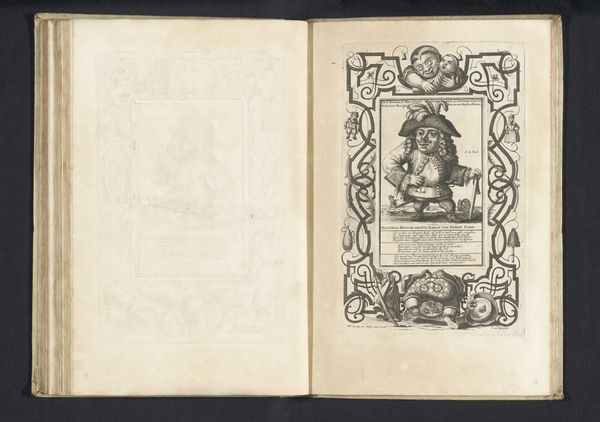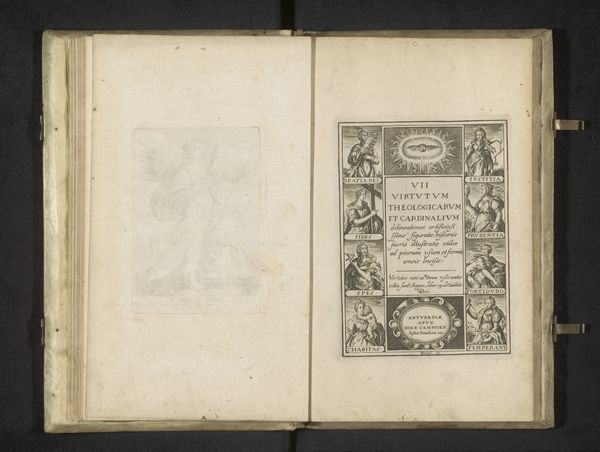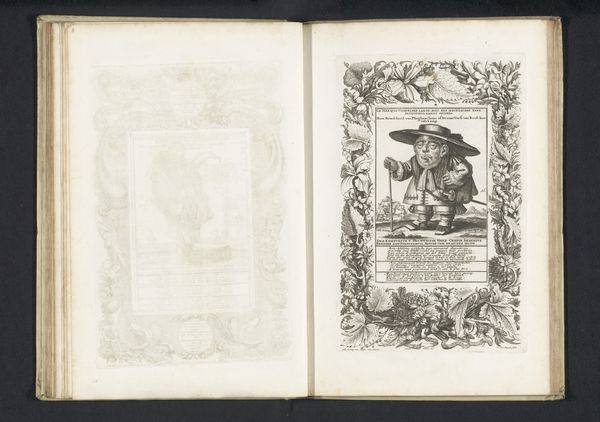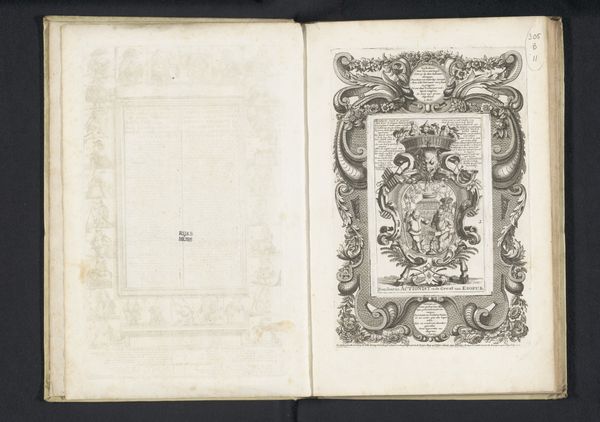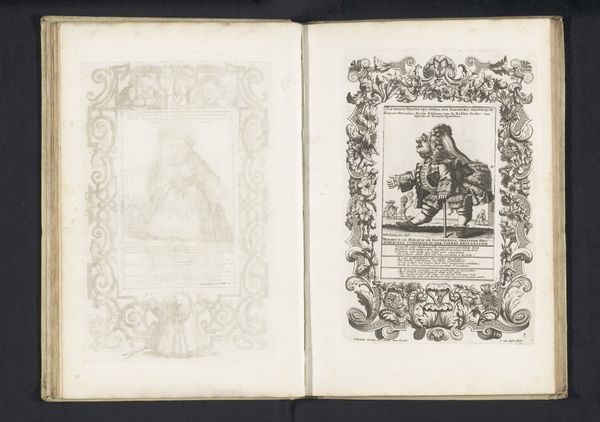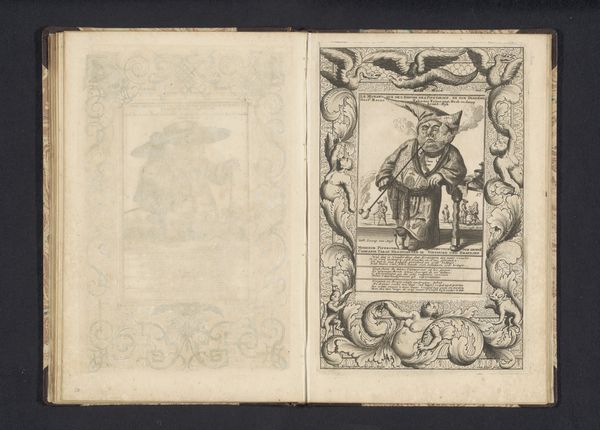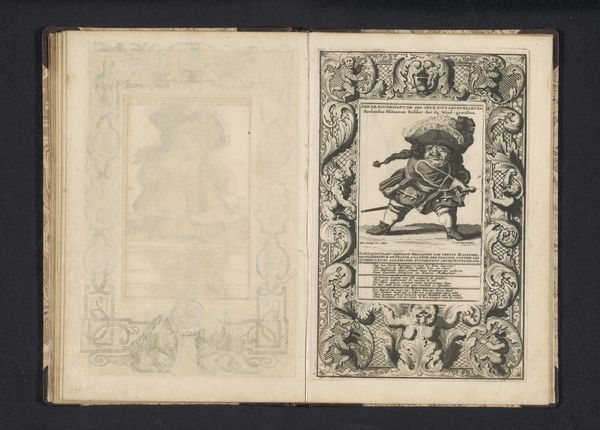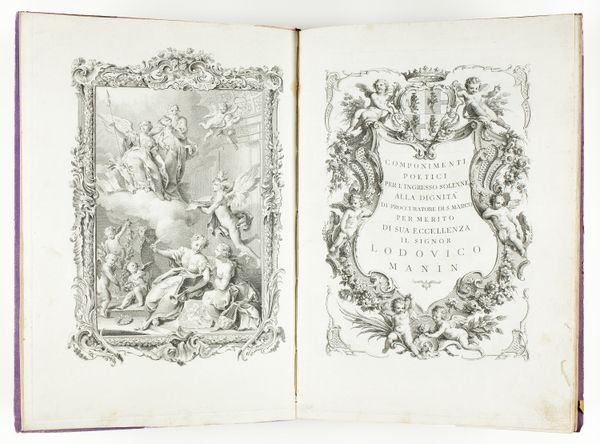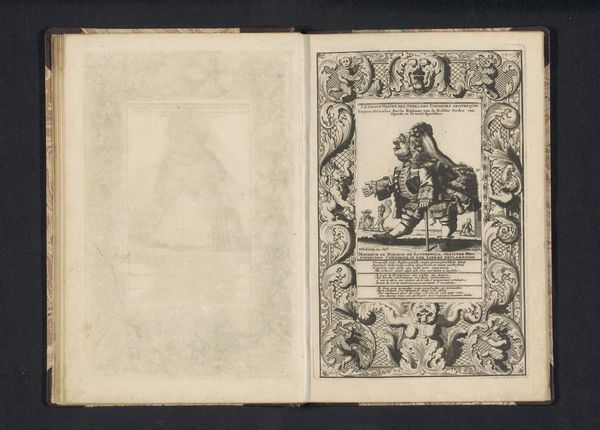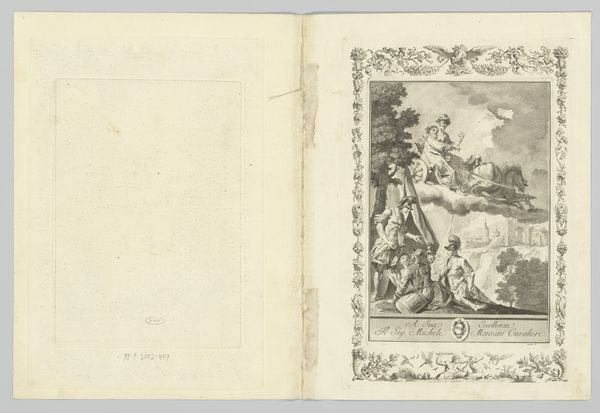
drawing, print, ink, pen, engraving
#
portrait
#
drawing
#
aged paper
#
book binding
#
paper non-digital material
#
baroque
# print
#
sketch book
#
personal sketchbook
#
ink
#
pen-ink sketch
#
pen and pencil
#
pen work
#
sketchbook drawing
#
pen
#
sketchbook art
#
engraving
Dimensions: height 169 mm, width 105 mm, height 275 mm, width 175 mm
Copyright: Rijks Museum: Open Domain
This engraving of Suavius Mellidonius was made in 1720 by Fopje Folkema. The lines you see are actually tiny grooves cut into a metal plate, likely copper, with a tool called a burin. Ink was then applied to the plate, pressed against a sheet of paper, and forced into the incised lines, leaving a raised image. Engraving was a highly skilled, time-consuming process, demanding incredible precision. The fine lines create detailed textures, define shapes, and give a sense of volume to the figure. This artisan's labour, however, sits within a broader socio-economic context. The printmaking industry relied on skilled artisans who were often anonymous laborers in larger workshops. Though Folkema's name is attached to this engraving, it is important to remember the many hands that contributed to its production. By appreciating the technical skill and labour involved in its making, we can move beyond simply looking at this image and begin to understand its broader cultural significance. Recognizing this skilled handcraft challenges distinctions between fine art and craft.
Comments
No comments
Be the first to comment and join the conversation on the ultimate creative platform.
